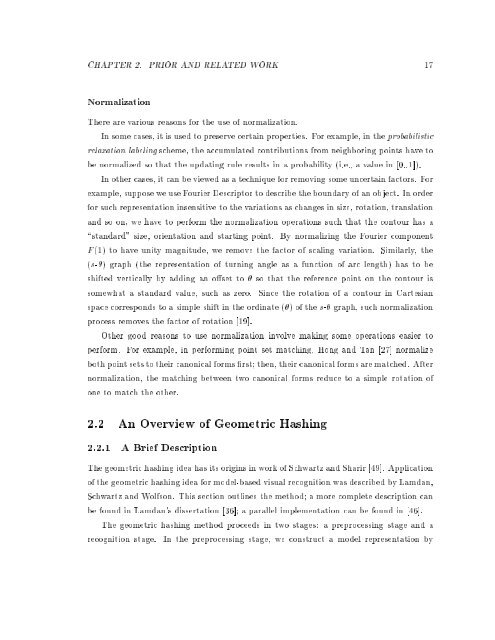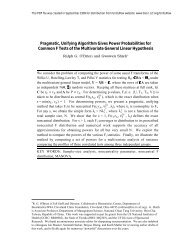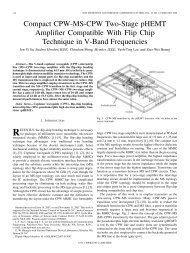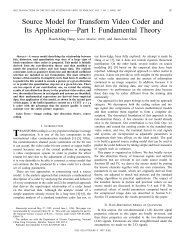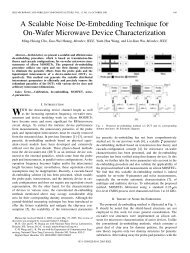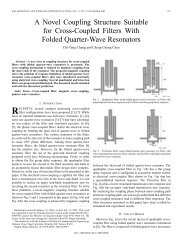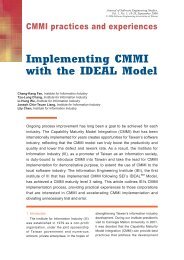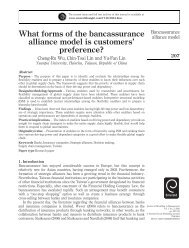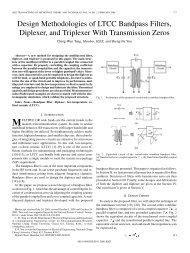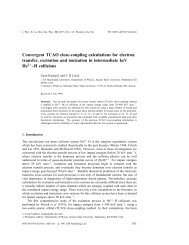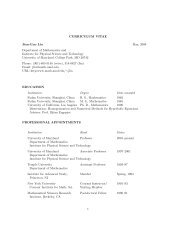A Probabilistic Approach to Geometric Hashing using Line Features
A Probabilistic Approach to Geometric Hashing using Line Features
A Probabilistic Approach to Geometric Hashing using Line Features
You also want an ePaper? Increase the reach of your titles
YUMPU automatically turns print PDFs into web optimized ePapers that Google loves.
CHAPTER 2. PRIOR AND RELATED WORK 17<br />
Normalization<br />
There are various reasons for the use of normalization.<br />
In some cases, it is used <strong>to</strong> preserve certain properties. For example, in the probabilistic<br />
relaxation labeling scheme, the accumulated contributions from neighboring points have <strong>to</strong><br />
be normalized so that the updating rule results in a probability èi.e., a value in ë0::1ëè.<br />
In other cases, it can be viewed as a technique for removing some uncertain fac<strong>to</strong>rs. For<br />
example, suppose we use Fourier Descrip<strong>to</strong>r <strong>to</strong> describe the boundary of an object. In order<br />
for such representation insensitive <strong>to</strong> the variations as changes in size, rotation, translation<br />
and so on, we have <strong>to</strong> perform the normalization operations such that the con<strong>to</strong>ur has a<br />
ëstandard" size, orientation and starting point. By normalizing the Fourier component<br />
F è1è <strong>to</strong> have unity magnitude, we remove the fac<strong>to</strong>r of scaling variation. Similarly, the<br />
ès-çè graph èthe representation of turning angle as a function of arc lengthè has <strong>to</strong> be<br />
shifted vertically by adding an oæset <strong>to</strong> ç so that the reference point on the con<strong>to</strong>ur is<br />
somewhat a standard value, such as zero. Since the rotation of a con<strong>to</strong>ur in Cartesian<br />
space corresponds <strong>to</strong> a simple shift in the ordinate èçè of the s-ç graph, such normalization<br />
process removes the fac<strong>to</strong>r of rotation ë19ë.<br />
Other good reasons <strong>to</strong> use normalization involve making some operations easier <strong>to</strong><br />
perform. For example, in performing point set matching, Hong and Tan ë27ë normalize<br />
both point sets <strong>to</strong> their canonical forms ærst; then, their canonical forms are matched. After<br />
normalization, the matching between two canonical forms reduce <strong>to</strong> a simple rotation of<br />
one <strong>to</strong> match the other.<br />
2.2 An Overview of <strong>Geometric</strong> <strong>Hashing</strong><br />
2.2.1 A Brief Description<br />
The geometric hashing idea has its origins in work of Schwartz and Sharir ë49ë. Application<br />
of the geometric hashing idea for model-based visual recognition was described by Lamdan,<br />
Schwartz and Wolfson. This section outlines the method; a more complete description can<br />
be found in Lamdan's dissertation ë36ë; a parallel implementation can be found in ë46ë.<br />
The geometric hashing method proceeds in two stages: a preprocessing stage and a<br />
recognition stage. In the preprocessing stage, we construct a model representation by


